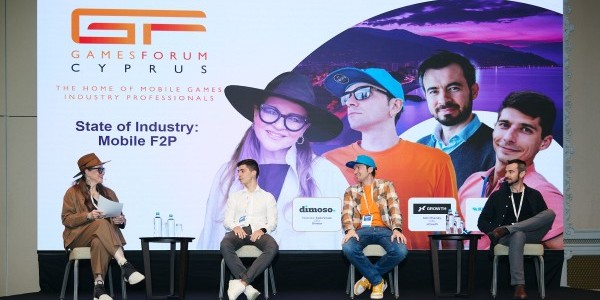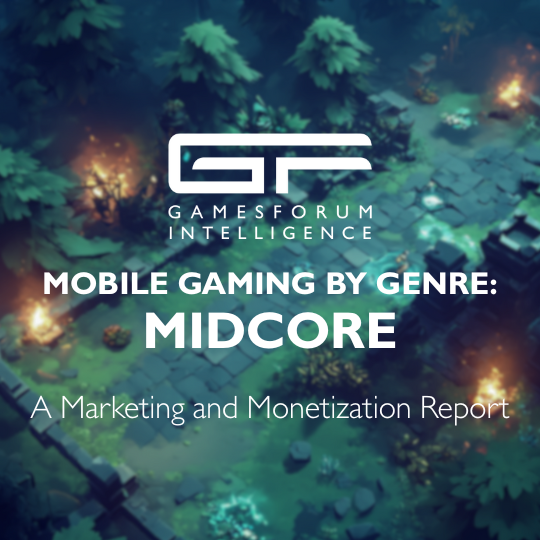Debunking Common Myths About Brands in Mobile Games

The evolving dynamic between brands and gaming creators is not just changing the marketing playbook but is also reshaping economic impacts in the gaming industry. The financial benefits for both brands and game developers are substantial, with branded content and partnerships driving significant revenue uplifts.
In this new era, the romance between brands and mobile games is undoubtedly poised to redefine marketing strategies, driven by authenticity, creativity, and a deeper understanding of the gaming community. We take a look at the opportunities for brands-in-game, dispelling some common myths along the way.
Myth 1: Brands ruin the gameplay experience
Cast your mind back to the early days of in-game branding — some instances, like Pepsiman or Red Bull Power Up might stand out as particularly heavy-handed and clunky.
“Early methods of in-game branding were relatively simple and often limited to static ads. These included billboards within the game environment or brand logos on in-game items, which were mostly passive and didn’t interact seamlessly with the gameplay. Today, integrations are far more sophisticated and immersive. They involve dynamic and interactive elements that enhance the gaming experience. For instance, brands can now be a part of the game's storyline, where players use branded items to achieve goals, or they sponsor exclusive in-game content or events that engage players more deeply. Additionally, real-time updates allow brands to change their in-game ads, ensuring timely promotions and relevance leveraging ad technology and programmatic”, said Co-founder of Livewire, Indy Khabra.
When it comes to brands-in-game, we’ve come a long way. In fact, in-game advertising can deliver up to a 12% uplift in purchase intent. The bottom line is that ads are not meant to disrupt the gaming experience, and instead, should enhance it.
The integration of advertisements into games can have a positive impact, as it often leads to the formation of communities around these experiences. According to a Battenhall report, the future of brands in gaming is set to be dynamic and engaging, with brands moving beyond traditional advertising to create meaningful interactions within the gaming world. For example, in-game advertising has evolved from disruptive pop-up ads to more sophisticated and personalized placements that blend seamlessly into the game environment. This approach not only enhances the gaming experience but also provides value to the players.
“I’ve had the pleasure of working on some incredible brand integrations over the years in some of the most amazing top selling and indie games, but there are some that really stand out. The sweet spot is definitely when it’s a brand campaign that grabs attention but generates the right level of intrigue to generate engagement,” says WeGame2’s Co-founder, Nina Mackie.
Myth 2: Brand integration is only about advertising
One of the most pervasive misconceptions in the realm of mobile gaming is the belief that the value exchange between brands and games is minimal and confined solely to advertisements. This overlooks the vibrant and growing gaming communities that brands are beginning to understand and engage with more effectively. The mobile gaming market is burgeoning, with a user base that continues to expand rapidly. As brands increasingly recognize the immense potential of this market, their strategies for sponsorships and advertisements are evolving. They are now aligning more closely with the dynamic nature of gaming communities, creating more integrated and engaging brand experiences that go beyond traditional advertising. This evolution signifies a deeper, mutually beneficial relationship where brands enhance the gaming experience, and developers gain new revenue streams and higher user engagement
Forget banner ads, brands are diving headfirst into gaming worlds like Fortnite and Roblox. But even with these fancy in-game experiences, they still need creators to spread the word. By teaming up with creators for longer periods and working more closely together, brands can become a natural part of the conversation within communities like Discord servers. This makes fans of those creators much more likely to jump in and try out the branded stuff when it shows up.
“I think the player must be paramount to any brand partnerships and the mutual benefit can be both revenue and awareness related. When it comes to maintaining the integrity of the gaming experience then as a developer you should consider some of the following things:
- Does this brand relate to my game theme, audience and do they represent the values I do? Whilst I understand the pressure to gain revenue it’s noticeable to players if the brand seems out of place.
- Does this brand partnership elevate the experience in any way? If not, then are they worth placing in my game?
- Offer your players the choice to interact with brands, is it an opt-in interaction or is it forced with intrusive interstitials?
- Be transparent! This is important when there are obvious ‘product placement’ or ‘sponsorship’ types of integrations - let players know.
- Feedback - Developers have direct access to their audience and I’d always recommend frequently surveying a pool of players to understand their opinions on brand activation." continues WeGame2's Nina Mackie.
The retention rates of mobile games also highlight the potential for long-term brand engagement. Games in genres like match, puzzle, and tabletop not only have high initial retention rates but also maintain player interest over longer periods. This sustained engagement offers brands ongoing visibility and interaction opportunities with their target audiences.
In essence, the evolution of brand partnerships in mobile gaming represents a broader trend of seeking authenticity and deeper engagement. Brands are realizing that by allowing creators to introduce their products organically, they can achieve more meaningful and lasting connections with gaming communities. This strategy is not only reshaping marketing tactics but is also driving significant economic impacts within the mobile gaming industry, making it a critical area of focus for marketers in 2024 and beyond.
Myth 3: In-game brand advertising only resonates with a certain audience segment
The gaming industry is booming, with over 3 billion gamers worldwide—nearly 40% of the global population—making it a prime target for advertisers. Contrary to popular belief, in-game advertising reaches a vast and diverse audience, not just a small segment. The gaming market spans all genders, demographics, and regions, making it a highly valuable platform for brand exposure.
This innovative channel provides a unique way to connect with audiences that are often hard to reach through traditional advertising methods, significantly boosting brand awareness. “Historically and still partly today, brand advertisers tend to associate gamers with the 'geek' stereotype: usually kids or adolescents, who would spend long hours playing games by themselves in their bedroom. They assume the age category is mostly 12 to 20 years old and predominantly young men. That's incorrect. Over the past decade, mobile gaming has become a mainstream media for all ages, genders, and socio-economic groups,” said Vincent Février, Chief Marketing Officer at TapNation.
“We've seen new categories of gamers, including women aged 30 to 55+, enjoying games like puzzles and evergreen card games. This shift dispels the myth that only teen-oriented brands succeed in mobile gaming. Now, we're witnessing beauty, e-commerce, and FMCG brands successfully advertising to large, diverse audiences across all age groups,” he continues.
Are mobile games the new frontier for brand innovation?
This mutually beneficial relationship between brands and mobile games is becoming increasingly apparent. Brands gain access to a highly engaged, tech-savvy audience, while developers benefit from diversified revenue streams and enhanced game experiences. Influencer partnerships and cross-platform development are emerging as pivotal strategies, offering expansive reach and deeper user engagement.

We have witnessed in the past few years the rapid growth and popularity of e-sports competition, gaming streaming and popular games and platforms like Candy Crush, Roblox or Fortnite. Those supports are leading the way and help popularize gaming for all types of audiences. Thru are such famous games that brands can't simply avoid or exclude them from their media plans. We've seen great partnerships and custom integrations of Brands within Fortnite and Roblox, where the brand is fully integrated in the gameplay and becomes entirely part of the user experience. Those custom experiences require creativity, well thought integrations, specific budgets to appeal to the users & players, and it works! At Tapnation, we are bringing the same experience to mobile games with global audiences allowing opportunities to create Brands' takeover and product placements within our casual and hyper-casual titles. We are sharing what our audience likes, their demographic categories (age, gender, interests) so that our advertisers know who they are talking to and can customize the message in that direction.
Lastly, what brand advertisers look for and what gaming publishers need to work on in order to deliver mutual value is centered around 4 important pillars: Attention measurement, Engagement, Scale and Audience profile. The tools are there in the market to help track, measure and confirm the high attention and engagement of players towards brands, so it's up to both sides to use them efficiently. Secondly, advertisers need reach and scale, so publishers will want to have large scale audience games in order to absorb large budgets, or create games catalogue with groups of apps. Finally, being able to share details about your audience's interest, age groups or other demographics will be valuable informations that will make the advertiser ready to pay more for such qualified audience.
Vincent Février, CMO, TapNation

Livewire's successful integrations have a few key factors in common. First, they blend seamlessly into the game environment, enhancing rather than disrupting the player experience. Using our gametech platform Gameview, our brand clients are well-matched to the game's target audience, ensuring the integration feels relevant and authentic. Other brands can learn from these case studies by understanding the importance of knowing their audience, ensuring that brand integrations adds value to the gaming experience, and using analytics to measure the impact while ensuring it’s a win for the player, developer and marketer.
Looking to the future, in-game branding will evolve to leverage data analytics for highly personalized brand experiences tailored to individual players’ preferences and behaviors. Brands will see more opportunities to create highly immersive and interactive in-game experiences. We will also see more cross-platform integrations, where brands create cohesive experiences spanning consoles, PC, and mobile. Interactive storytelling will become a significant trend, with brands becoming part of the narrative and player choices affecting brand interactions. The future of in-game branding will be defined by deeper integration, enhanced personalization, and the use of emerging technologies to create more engaging and meaningful interactions.
Indy Khabra, Co-founder, Livewire

I’ve always maintained that the player is first and foremost whenever a brand wants to enter their space and here are a few golden rules that the award winning campaigns should always follow:
- Seamless integration - Native placements do work, it’s a much more natural way to place a brand in front of a player audience and with formats like intrinsic in-game ads and branded items as rewards, these types of integrations work really well as a subtle way to engage without being too ‘in your face’.
- Brand Relevance - Integration within contextually relevant games work too, so Red Bull sponsoring a motocross game would make sense to players
- Leveraging Social - Features that are built in: we see this in fashion, competition games whereby the player can share their scores/leaderboard status on other social channels and tag the sponsored brands. This is a big win for brands as the marketing impact extends outside the game itself
- Value Exchange - It’s crucial that brands offer tangible benefits to the players, such as exclusive content or unique gameplay features. This strategy for a campaign not only incentives engagement but also forges a positive association with the brand.
Nina Mackie, Co-founder, WeGame2











